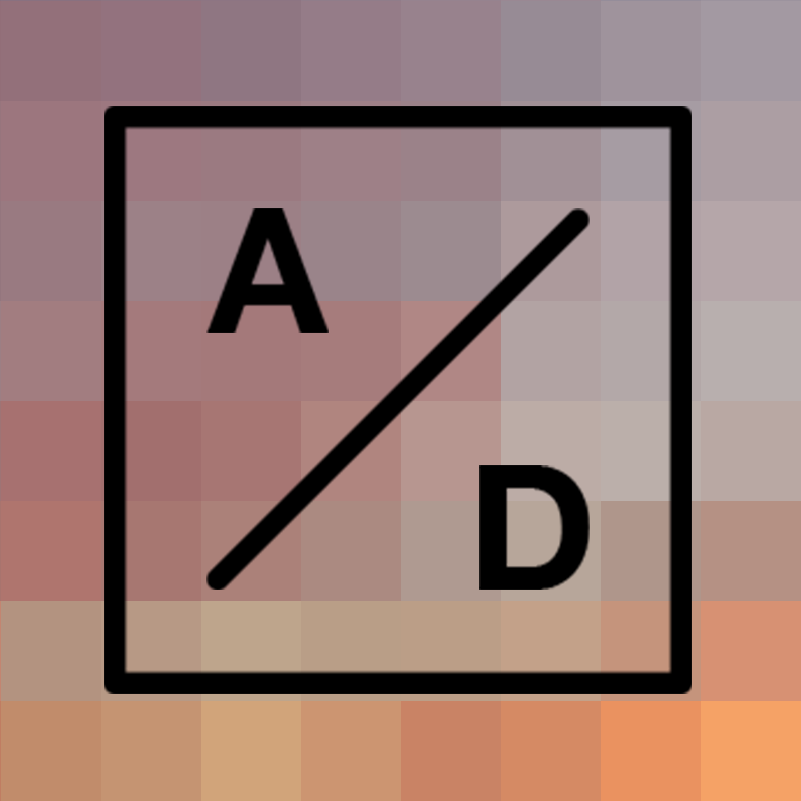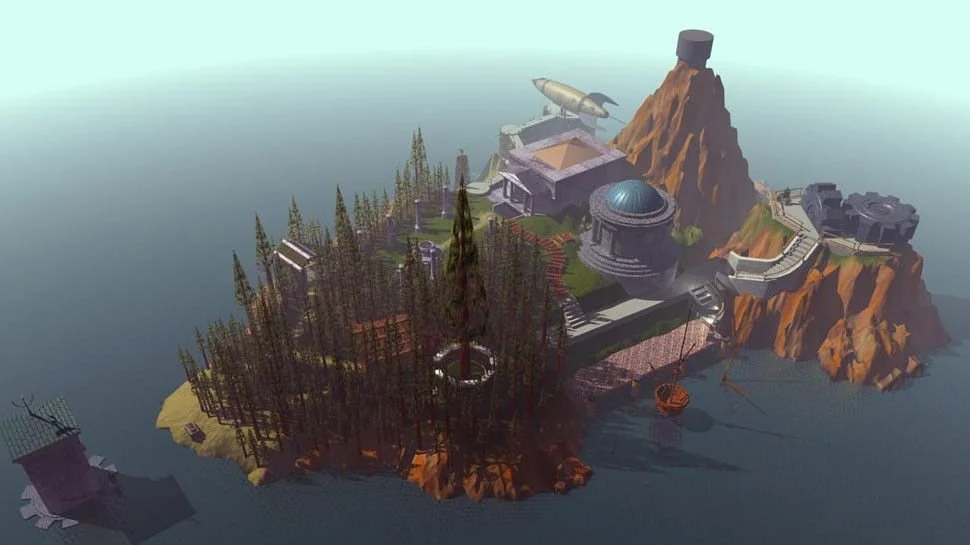Drawn Together
I've spent decades extolling the virtues of Myst, the early 90's videogame phenomenon that helped usher in the CD-Rom era with its pre-rendered computer graphics, steampunk-like architecture and machinery, and the casually unfolding tale of family intrigue and deception. Even 29 years after its release, I'll occasionally head back into its worlds and revisit my youth while digitally walking its quiet paths beneath swaying trees and lapping seas. (The game has been remastered and rebuilt several times - its latest iteration removes the static images and now allows players to journey through the islands in a dynamic virtual reality environment.)
Why I've liked Myst for all these years has been a question I've never been fully able to answer. There's little to no action. The plot, at least on the surface, isn't particularly deep or nuanced. And while the graphics were groundbreaking at the time, they now seem blocky and dated. So, outside of nostalgia, what is it about this game that scratches some unknown itch all these years later? I found the answer in an unlikely place: artificial intelligence.
I can't draw. I can't paint. I can't sketch. Hand me a pencil and ask me to draw a person and the best you'll get in return is a stick figure with strange proportions and misshapen features. But ask me to write something, and I can conjure up worlds, characters, feelings, and drama. I'll paint the best picture I can with words, and I'll ask your mind to fill in the blanks.
It's why I enjoy writing TV commercials and screenplays so much. My words get transformed into something visual - something tangible. It's also why the biggest struggles I've had as a creative director were trying to tell designers what I wanted to see. I'd have a clear image in my head, but asking a designer or art director to interpret that image with only my words and limited knowledge of tools to go by would ultimately lead to frustrations on both ends. I couldn't simply just draw out what I wanted to see (though I often tried, much to the consternation and laughter of the art department), and often the final product was an amalgamation of misinterpretation, capitulation, and anger.
But what if there were a tool that could take the written word and translate it into an image? And not just any image, but one that looked almost ... artistic? I'd heard rumblings about artificial intelligence being used to create images, but the results I'd seen looked mediocre and doused in a heavy amount of "open to interpretation." Ask a computer to draw a tree, and you'll probably get something resembling a tree. Ask it to draw a tree at night, beneath a cloudy sky, near a river, that embodies the idea of "mystery" and you'll get a Picasso meets David Hockney collage of disparate colors and objects that aren't coherent or beautiful.
But, as is often the case, I was proven wrong.
Along came DALL-e and MidJourney - two artificially intelligent art generators that take concepts, ideas, and references from text-based prompts and turn them into something bordering on beautiful. With a few well-used terms, one could bring to life entire worlds filled with creatures, drama, and excitement. As I saw the results of friends' prompts begin to pop up on my social media feeds, I grew more and more intrigued before finally diving into the MidJourney pool earlier this summer.
This could be what I'd be searching for all these years. This was the tool that would let me create the worlds I'd seen in my head.
I started small with relatively easy concepts. Landscapes mostly. Then I branched out into futuristic scenes, robots, flying cars, and cities in the sky. MidJourney struggled with human faces and much of the renders of people I asked for came out looking like rejects from a David Cronenberg film. But the more prompts users gave the AI, the better it got. Eventually, I was able to produce images of non-existent people, but people who looked like people nonetheless.
With this technology, I was able to do pre-vis for scripts. I didn't have to tell you what I wanted, I could show you. The images in my head (with some refinement along the way) were out in the open, consumable, and visual. I'd input text prompts from stories I'd written and MidJourney would spit out tangible pictures of my dreams. It was thrilling, intimidating, and borderline scary.
I see the use of AI image generators as tools. It's hard to call their output art, per se. And while AI does use the works of famous artists as references for its rendering process, no one owns the copyright on an image that's produced and it falls into the public domain. But that hasn't stopped the generated imagery from winning awards as was the case at the Colorado State Fair earlier this year.
So, perhaps, the question isn't what you produce, but how you produce it. To what ends are you creating the imagery? In the beginning, my AI image generation was based purely on curiosity which lead to using AI to help visualize my thoughts while giving art directors some guidance on what I wanted to see. More and more, I'm convinced it is a tool, a wonderful and evolving tool that helps give a visual language to my thoughts. While others have used it as a catapult to launch their artistic endeavors.
Creative director, transmedia genius, and friend, Steve Coulson, has taken MidJourney one step further and used it to create actual art. Like me, Steve isn't much of a visual artist, but what he can do is come up with incredible ideas. Recently, he used MidJourney to create two comic books. Using written prompts, he was able to coax visuals out of artificial intelligence and use those images to create two interesting, in-depth, and visually-stunning books. Both of Steve's comic books are available here.
The mythology behind Myst and its sequels is something called "the art." This ancient exercise involves using words to create worlds - literal portals to infinite dimensions called "ages" - where the author's words become living breathing places. MidJourney and DALL-e can't quite create actual worlds, but they can quickly - and many times beautifully - take the words that are written and produce visual interpretations of them. Is it art? I suppose that depends on one's definition of the term. I, for one, stand firm in my belief that artificial intelligence will never truly replace the artist, but taking a few notes from the Myst universe, it can provide a stepping stone for artists to create worlds of their own.




